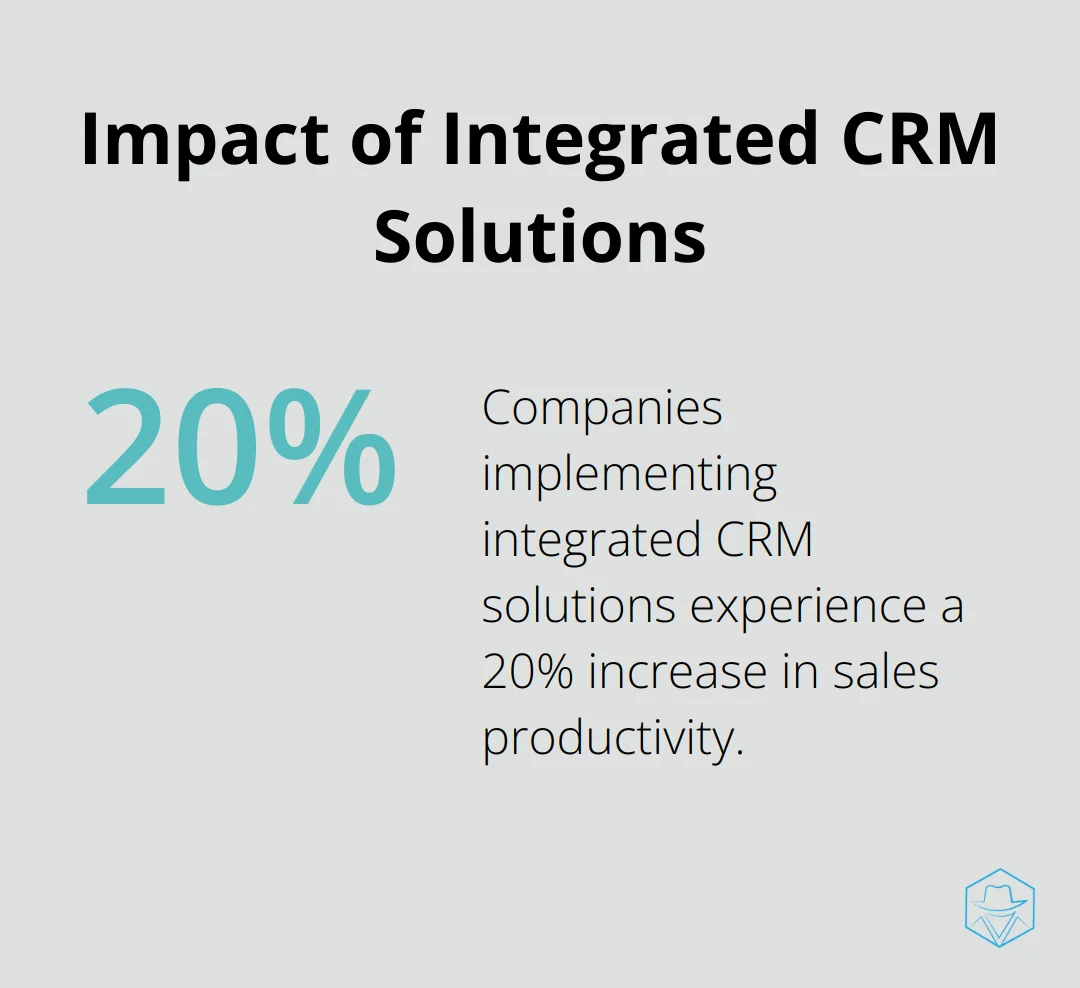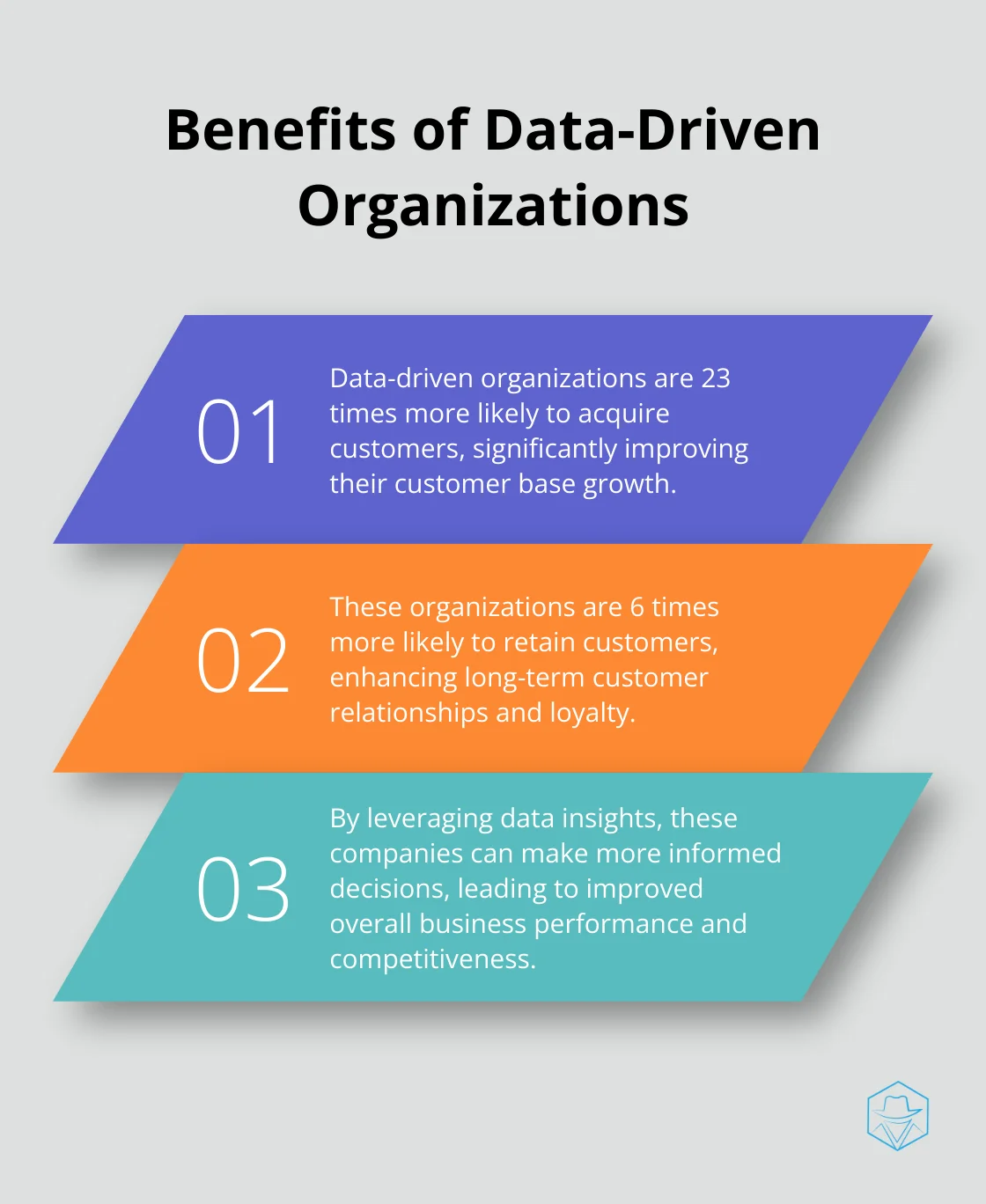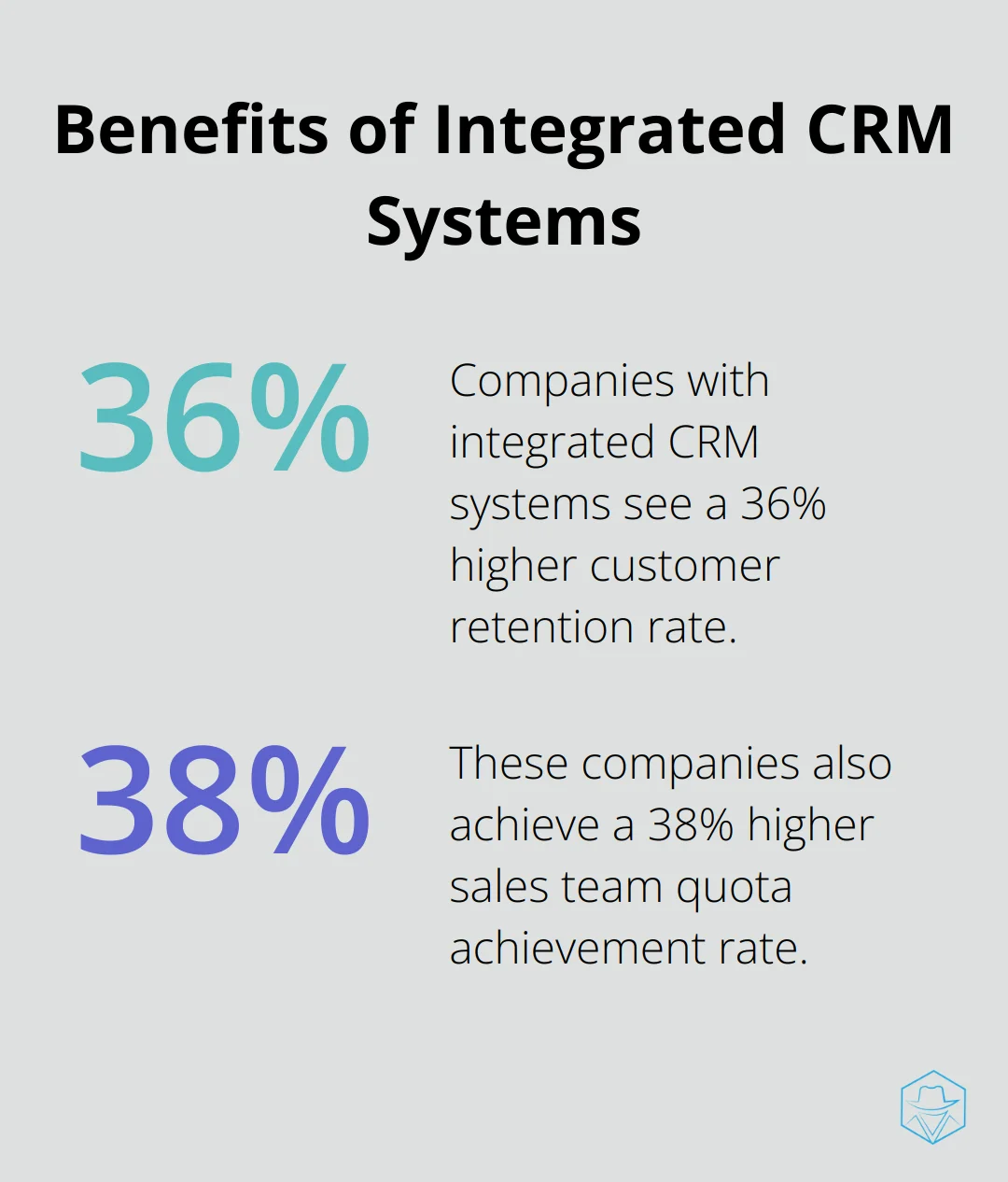CRM Cockpit: Navigate Your Business Success

At Drop Cowboy, we’re always looking for ways to help businesses streamline their operations and boost customer relationships. That’s why we’re excited to introduce you to the CRM cockpit, a powerful tool that’s revolutionizing how companies manage their customer data and interactions.
The CRM cockpit takes traditional customer relationship management to new heights, offering a centralized hub for all your customer-related activities. In this post, we’ll explore how this innovative system can transform your business processes and drive success.
What Is a CRM Cockpit?
The Evolution of CRM Systems
Traditional CRM systems often operate in silos, with separate modules for sales, marketing, and customer service. A CRM cockpit integrates all these functions into a single, unified interface. This integration allows for a 360-degree view of customer interactions across all touchpoints.
A study by Forrester Research shows that companies implementing integrated CRM solutions experience a 20% increase in sales productivity. This boost stems from the streamlined access to critical information that a CRM cockpit provides.

Key Features of a CRM Cockpit
Real-time data visualization stands out as a primary feature of CRM cockpits. Users access up-to-the-minute insights through intuitive dashboards, eliminating the need to sift through spreadsheets or run complex queries. These dashboards display the most relevant KPIs for each user’s role (customizable to individual needs).
Workflow automation represents another essential feature. A CRM cockpit triggers actions based on predefined rules, such as assigning leads to sales reps or sending follow-up emails after customer interactions. This automation saves businesses significant time and resources. A report by Nucleus Research indicates that CRM automation can increase sales productivity by up to 14.5%.
Actionable Insights for Decision-Making
The ability to turn data into actionable insights proves the most valuable aspect of a CRM cockpit. The system provides predictive analytics to guide business strategy by analyzing customer behavior patterns, purchase history, and interaction data.
For instance, a CRM cockpit might identify that customers who engage with a specific marketing campaign are 30% more likely to make a purchase within the next 30 days. Sales teams can prioritize their outreach efforts more effectively with this information.
Implementation and User Adoption
While CRM cockpits offer powerful capabilities, they require proper implementation and user adoption to maximize effectiveness. Businesses should invest in comprehensive training programs to ensure their teams leverage the full potential of these systems.
The success of a CRM cockpit depends on how well it integrates with existing business processes and how effectively team members utilize its features. Regular updates and maintenance ensure the system remains aligned with evolving business needs and technological advancements.
As we move forward, let’s explore the specific benefits that implementing a CRM cockpit can bring to your business operations and customer relationships.
Why CRM Cockpits Drive Business Growth
Unified Data Management
CRM cockpits excel at centralizing data from various sources. This consolidation eliminates data silos, a common problem in many organizations. A study by Experian reveals that businesses lose an average of 12% of their revenue due to poor data quality. With a CRM cockpit, you maintain clean, up-to-date information across all departments.
When a sales rep updates a customer’s contact information, it becomes immediately available to marketing and support teams. This real-time synchronization ensures everyone works with the most current data, reducing errors and improving efficiency.
Data-Driven Decision Making
The analytics capabilities of CRM cockpits transform strategic planning. These systems process vast amounts of data to provide actionable insights. A report by McKinsey found that data-driven organizations are 23 times more likely to acquire customers and 6 times more likely to retain them.

CRM cockpits offer predictive analytics, helping you anticipate customer needs and market trends. You might discover that customers who purchase Product A are 70% more likely to be interested in Product B within three months. This insight allows you to create targeted upsell campaigns, boosting revenue.
Enhanced Customer Experience
With a comprehensive view of each customer’s journey, you provide personalized experiences at every touchpoint. A study by Salesforce revealed that 76% of consumers expect companies to understand their needs and expectations.
CRM cockpits enable you to track customer interactions across channels (from social media to support tickets). This holistic view allows you to tailor your communication and offers. If a customer frequently contacts support about a specific issue, you can proactively reach out with a solution, demonstrating attentiveness and potentially preventing churn.
Improved Operational Efficiency
CRM cockpits streamline workflows and automate repetitive tasks. This automation frees up valuable time for your team to focus on high-value activities. For instance, a CRM cockpit can automatically assign leads to sales reps based on predefined criteria, ensuring quick follow-ups and increasing conversion rates.
Moreover, these systems provide real-time performance metrics (such as sales pipeline health and customer satisfaction scores). Managers can quickly identify bottlenecks and make data-backed decisions to optimize processes.
Seamless Integration Capabilities
Modern CRM cockpits offer robust integration capabilities with other business tools. This seamless connectivity creates a unified ecosystem where data flows freely between different departments and applications. For example, integrating your CRM cockpit with your marketing automation platform allows for more targeted and effective campaigns based on customer behavior and preferences.
The power of CRM cockpits to drive business growth is undeniable. However, to fully harness this potential, businesses must implement these systems effectively and ensure widespread adoption among team members. Let’s explore the best practices for maximizing the effectiveness of your CRM cockpit in the next section.
How to Maximize Your CRM Cockpit’s Potential
Seamless Integration: The Foundation of Success
The power of a CRM cockpit lies in its ability to centralize data from various sources. Integrate your CRM cockpit with existing business systems such as your email platform, marketing automation tools, and customer support software. This integration creates a unified ecosystem where data flows seamlessly between departments.
When you integrate your CRM cockpit with your email platform, every customer interaction is automatically logged and accessible to all team members. This eliminates the need for manual data entry and ensures everyone has access to the most up-to-date information.
A study by Aberdeen Group found that companies with integrated CRM systems see a 36% higher customer retention rate and a 38% higher sales team quota achievement rate.

Comprehensive Training: The Key to User Adoption
The success of your CRM cockpit hinges on user adoption. Invest in thorough training programs for your team. This isn’t just about teaching them how to use the software; it’s about helping them understand how the CRM cockpit can make their jobs easier and more effective.
Create role-specific training modules. Sales reps should learn how to use the CRM cockpit to manage their pipeline effectively, while marketing teams should focus on leveraging customer data for targeted campaigns.
Consider appointing CRM champions within each department. These individuals can provide ongoing support and encourage best practices among their colleagues.
Data Hygiene: Ensuring Reliable Insights
A CRM cockpit is only as good as the data it contains. Implement strict data entry protocols and regular data cleansing processes. Set up automated data validation rules to catch errors at the point of entry.
Schedule regular data audits (quarterly or bi-annual exercises) where teams review and update customer information. This ensures your data remains accurate and valuable.
According to Experian, businesses believe 29% of their customer and prospect data is inaccurate. Prioritize data hygiene to avoid this pitfall and ensure your CRM cockpit provides reliable insights.
Customization: Tailoring for Maximum Relevance
One size doesn’t fit all when it comes to CRM cockpits. Customize dashboards and reports for different roles within your organization. Sales managers might need pipeline forecasts and team performance metrics, while customer service representatives might benefit from customer interaction histories and satisfaction scores.
Regularly solicit feedback from users about what information they find most useful. Use this feedback to refine and improve your CRM cockpit’s interface and functionality.
The goal is to provide each user with the most relevant information at their fingertips. This not only improves efficiency but also increases user adoption rates.
Continuous Improvement: Evolving with Your Business
View your CRM cockpit not as a static tool, but as a dynamic system that evolves with your business needs. Regularly assess its performance and make necessary adjustments. Try to stay updated with the latest CRM trends and technologies to ensure your system remains cutting-edge.
Implement a feedback loop where users can suggest improvements or report issues. This ongoing dialogue will help you identify areas for enhancement and keep your CRM cockpit aligned with your team’s evolving requirements.
Final Thoughts
The CRM cockpit revolutionizes business operations and customer relationships. It centralizes data management, provides real-time insights, and offers customizable dashboards for data-driven decisions. CRM technology continues to evolve with AI, machine learning, and predictive analytics, promising even more sophisticated capabilities in the future.
Businesses must develop a clear implementation strategy to harness the power of a CRM cockpit. This includes assessing current processes, choosing the right solution, and investing in comprehensive training. Establishing clear data management protocols will maintain the integrity of customer information and ensure the system’s effectiveness.
Drop Cowboy’s platform complements CRM cockpit functionalities with innovative features like ringless voicemail and SMS integration. These tools enhance marketing efforts and customer engagement strategies. The combination of a CRM cockpit and Drop Cowboy’s communication tools creates a robust ecosystem for managing customer relationships and driving growth.
blog-dropcowboy-com
Related posts

July 20, 2025
Through-Channel Marketing Automation: Key Benefits
Explore the key benefits of through-channel marketing automation and enhance your marketing efforts with streamlined processes and improved results.

September 3, 2025
Why Ringless Voicemail Beats Traditional Cold Calling Every Time
Discover how ringless voicemail enhances call deflection, outperforming traditional cold calling for efficiency and effectiveness.

March 8, 2025
Marketing Strategy: Text and Cases Explained
Explore effective marketing strategy text and cases. Discover practical tools and insights for successful campaigns with real-world examples.

August 4, 2025
What does it mean if a call goes straight to voicemail
Unravel reasons behind calls going straight to voicemail. Learn if your phone’s setting or network issues could be the cause.

April 21, 2025
Is Klaviyo Worth the Cost? Pricing Explained
Explore Klaviyo pricing and value. Learn if its features justify the cost for your marketing strategy. Make informed decisions with our analysis.

May 23, 2025
Turnkey Lender Reviews: Is It Right for Your Business?
Explore Turnkey Lender reviews to see if it’s the ideal solution for your business needs. Make informed decisions with real user insights.